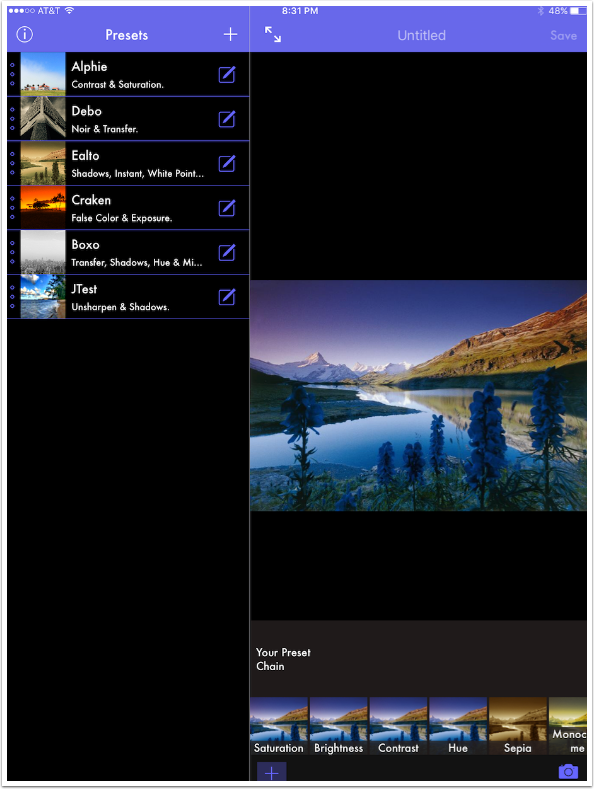The All New iMacs – Find Out What’s Inside ’em Here
As we mentioned earlier when the Apple store had gone down the all new iMacs are now here and ready to purchase. They look the same from the outside but inside things really look good. With the latest Intel Sandy Bridge Core i5 and i7 processors from Intel, the new high-speed Thunderbolt I/O interface developed in co-operation with Intel, a FaceTime HD camera and storage upgrades across the board.
Starting at $1,199, the new iMac is up to 70 percent faster and new graphics deliver up to three times the performance of the previous generation.

The 21.5-inch iMac has a single Thunderbolt port while the 27-inch model features two ports for even greater expansion. Developed by Intel with collaboration from Apple, Thunderbolt enables expandability never before possible on an all-in-one computer. Featuring two bi-directional channels with transfer speeds up to an amazing 10Gbps each, Thunderbolt delivers PCI Express directly to external high performance peripherals such as RAID arrays, and can support FireWire® and USB consumer devices, and Gigabit Ethernet networks via adapters. Thunderbolt also supports DisplayPort for high resolution displays and works with existing adapters for HDMI, DVI and VGA displays. Freely available for implementation on systems, cables and devices, Thunderbolt technology is expected to be widely adopted as a new standard for high performance I/O.
FaceTime HD

iMac includes a built-in FaceTime HD camera and Apple’s innovative FaceTime software for crisp, widescreen video calling the whole family can enjoy.
The picture is so clear, it will look and feel almost like you’re in the same room. Make HD calls from one new iMac to another or to a new MacBook Pro. You can also make video calls to other Intel-based Mac computers, iPad 2, iPhone 4, or the latest iPod touch.
Thunderbolt

Ultrafast and ultraflexible, the Thunderbolt port features two 10-Gbps data channels for data transfer that’s up to 12 times faster than FireWire 800 and up to 20 times faster than USB 2.0. And it offers unprecedented expansion capabilities for a new generation of high-performance peripherals. The new 27-inch iMac gives you not just one but two Thunderbolt ports. So in an instant, iMac can go from a family computer to a filmmaker’s dream machine.
With one tiny port, you get lightning-fast transfer speeds and huge expansion capabilities. Two 10-Gbps data channels per port mean you can transfer data up to 12 times faster than with FireWire 800. And don’t worry about a single drive or peripheral tying up the Thunderbolt port: You can daisy-chain as many as six devices plus a display. The 27-inch iMac includes a second Thunderbolt port for even more expansion possibilities. Connect up to six more devices or a display or two.
New Intel Core i5 and i7 Processors

Up to 1.7x faster at the core. New quad-core Intel Core i5 processors are standard on the new iMac. Choose a 21.5-inch iMac with a 2.5GHz or 2.7GHz quad-core Intel Core i5. Or expand your view with a 27-inch iMac featuring a 2.7GHz or 3.1GHz quad-core Intel Core i5. You can even configure iMac with the fastest quad-core processor available — the Intel Core i7. All models use Intel’s recently refined chipsets. That means the new iMac performs nearly twice as fast as the previous generation,1 adding a new dimension of speed to everything you do. And since Mac OS X is designed to take advantage of each core, it captures every last bit of performance from the processor.
Turbo Boost Great For Aperture Users

Say you’re using a processor-intensive application like Aperture 3 or Final Cut Pro that benefits from extra power. Turbo Boost 2.0 automatically increases the speed of the active cores — up to 3.8GHz. And by shifting core frequency in small increments, Turbo Boost allows the processor to manage performance without sacrificing efficiency. All this takes place behind the scenes, so your work (or play) goes smoother and faster.
Watching a movie, updating your blog, editing photos. Tasks like these require data to travel from place to place. The latest Intel Core architecture puts the processor, cache, memory controller, and graphics engine on a single chip. Since data doesn’t have as far to travel, you get faster performance and greater efficiency.
With faster access to memory, each core gets right to work on your data, rather than waiting for it to arrive. That’s why Intel Core architecture uses an integrated memory controller to connect fast 1333MHz memory directly to the processor. Together with up to 8MB of shared L3 cache, that helps your applications run at peak performance.
Advanced AMD Radeon HD graphics

When you need performance for things like playing 3D games, editing HD video, or running design software, the discrete AMD Radeon HD graphics in iMac go to work. You see more frames per second and experience better responsiveness. With the AMD Radeon HD 6970M, the top-of-the-line 27-inch iMac offers the best graphics of any all-in-one. But no matter which iMac you choose, you’re guaranteed superior graphics performance. With up to 2GB of dedicated GDDR5 video memory, these processors provide up to 3x faster performance than the previous generation.
LED Backlighting

Full brightness with no waiting. That’s the advantage of the LED-backlit iMac display. Unlike displays that take time to warm up before they reach maximum brightness, an LED-backlit display is instantly on and uniformly bright. LED backlighting also lets you finely tune the iMac display to suit the ambient light in even the dimmest room.
The 21.5-inch iMac features 1920-by-1080 resolution. The 27-inch iMac boasts even greater resolution of 2560-by-1440. That’s a whopping 78 percent more pixels than the 21.5-inch model. And more pixels mean images look crisp and true to life. A 1000:1 contrast ratio gives you more vibrant colors and blacker blacks. All in a 16:9 aspect ratio — the same as an HDTV.
The iMac display looks great from any seat in the house, thanks to a premium display technology called in-plane switching (IPS). IPS gives you a bright picture with excellent color — even if you’re viewing the display from the side.


